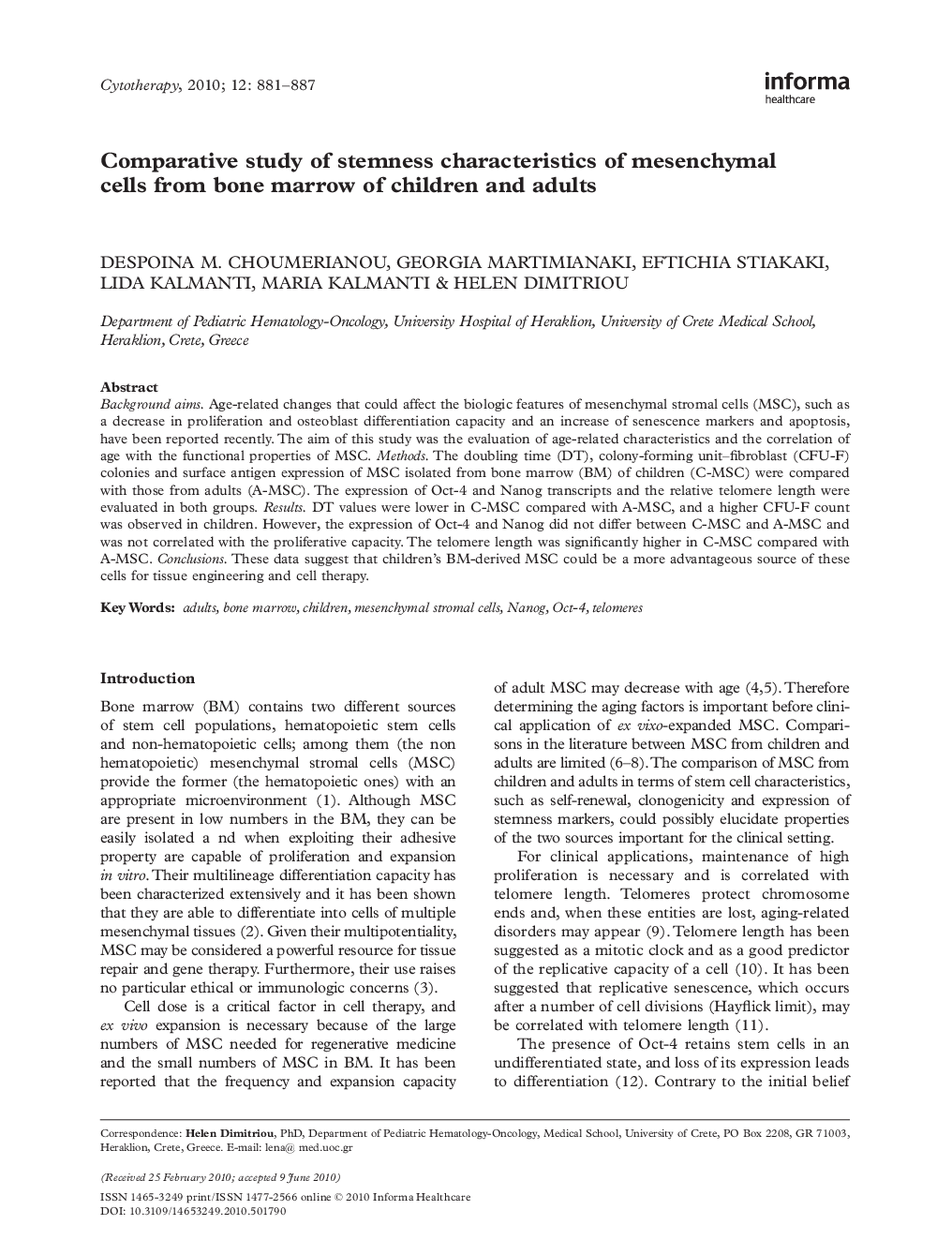| Article ID | Journal | Published Year | Pages | File Type |
|---|---|---|---|---|
| 2171964 | Cytotherapy | 2010 | 7 Pages |
Background aimsAge-related changes that could affect the biologic features of mesenchymal stromal cells (MSC), such as a decrease in proliferation and osteoblast differentiation capacity and an increase of senescence markers and apoptosis, have been reported recently. The aim of this study was the evaluation of age-related characteristics and the correlation of age with the functional properties of MSC.MethodsThe doubling time (DT), colony-forming unit–fibroblast (CFU-F) colonies and surface antigen expression of MSC isolated from bone marrow (BM) of children (C-MSC) were compared with those from adults (A-MSC). The expression of Oct-4 and Nanog transcripts and the relative telomere length were evaluated in both groups.ResultsDT values were lower in C-MSC compared with A-MSC, and a higher CFU-F count was observed in children. However, the expression of Oct-4 and Nanog did not differ between C-MSC and A-MSC and was not correlated with the proliferative capacity. The telomere length was significantly higher in C-MSC compared with A-MSC.ConclusionsThese data suggest that children's BM-derived MSC could be a more advantageous source of these cells for tissue engineering and cell therapy.
